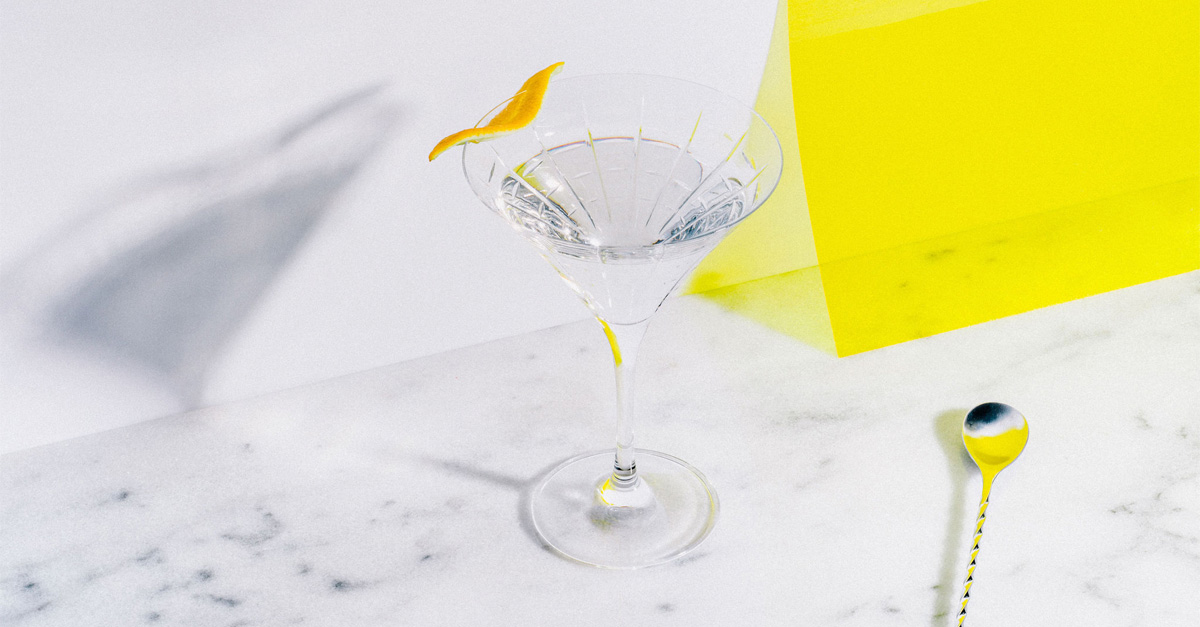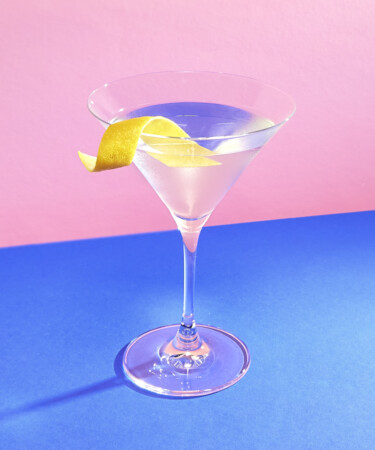Best Practices: The Key to Mastering Martinis Is Finding Your Balance
Served in fancy glassware prone to sloshing, Martinis can intimidate otherwise confident home bartenders. After all, drinks without a lot of ingredients hide even fewer flaws.
Fortunately, mastering Martinis is easier than you think. Like life itself, Martinis are all about balance.
A traditional Martini recipe has exactly two ingredients: gin and dry vermouth. The trick is balancing the herbal spirit with your fortified wine, and then tweaking the results to your tastes. Martinis can be dry or wet, depending on the amount of vermouth involved. They might be garnished with a twist of lemon, a pearl onion, or a skewer of olives. And, depending on who you ask, Martinis can feature gin or vodka.
What's the best way to find your footing? We culled advice from expert bartenders to determine these five dos and don’ts for making Martinis.
How To Make A Martini
1. Use Fresh Vermouth.
The delicate flavors of a Martini ask a lot of its components. Use good quality gin (or vodka, for that matter) and vermouth. An open bottle of vermouth has a shelf life of approximately three months in your refrigerator.
“It lasts longer than milk but not as long yogurt,” Don Lee, partner at Existing Conditions in NYC, says.
Lee recommends buying smaller bottles of vermouth to prevent yours from expiring before you reach the end. “It’s so cheap already,” he says, “Saving $2 for a larger bottle isn’t worth it.”
2. Crack Your Ice.
Fussing over ice might seem precious, but the size and style of your ice cubes directly corresponds to how quickly they dilute and chill your cocktail. For stirred drinks like Martinis, bartenders prefer to crack whole ice cubes à la minute, or as they fix each drink. Ice is coldest at its center, so freshly cracked cubes cool your drink fastest.
If you’re making a Martini at home you can absolutely use pre-formed cubes from your freezer tray and move on with your life. Or, you can crack ice like a pro by following expert tips from cocktail legend Audrey Saunders.
“Hold a large ice cube in the center of your palm,” Saunders says in Bon Appetit. Next, whack it with the back of a spoon to crack it into jagged pieces. “Transfer ice to a mixing glass and repeat until you’ve got enough cracked ice to fill a glass,” she says.
It might be tempting to show off that beautifully cracked ice in your final product, but restrain yourself. “Don’t leave ice chips in the glass unless requested,” Ashtin Berry, Matriarch, The Cook’s Club in New Orleans, tells us. Any ice left in the drink will dilute it, thus unraveling your perfectly balanced flavors.
3. Chill Your Glass.
This is a very easy, 100 percent free way to elevate at-home bartending. Chilled glassware keeps your drink cooler for longer, which in turn maintains its balance of flavors.
It also dramatically improves user experience. “No one wants a cold beverage in a room-temp glass,” Berry says.
Best of all, it doesn’t matter if you’re drinking your Martini out of fancy stemware, or pairing your cocktail with M&Ms and whatever’s free to watch on Amazon Prime. A Martini in a chilled coffee mug still feels special.

What To Avoid When Making Martinis
1. Ditch Your Cocktail Shaker.
James Bond notwithstanding, bartenders recommend stirring, not shaking Martinis. Stirring gives you more control over your drink and its temperature, and you are less likely to over-dilute it with errant ice shards.
“Stirring a Martini is great in the same way driving a manual car is,” Felix Cohen of London’s Every Cloud bar tells the BBC. “You can see, feel, and hear what’s happening, and, with one hand on your mixing glass or tin, you know when it’s reached the perfect temperature.”
A general rule of thumb is that spirit-forward drinks like Martinis, Manhattans, and Old Fashioneds are rarely shaken; whereas those involving egg whites, dairy, citrus, or liqueurs usually involve a cocktail shaker.
2. Don’t Overthink It.
If you want to flip the ratio of vermouth to gin (or vodka) for a reverse Martini, go for it. If you like your Martini served on top of half a jar of cheap olives, or garnished with a lemon wheel instead of a twist, there is nothing to stop you from doing exactly that.
“In the age of Instagram, people are projecting what they think they’re supposed to like,” Lee adds. “Don’t take a picture. Don't worry about it. Live your life.”

